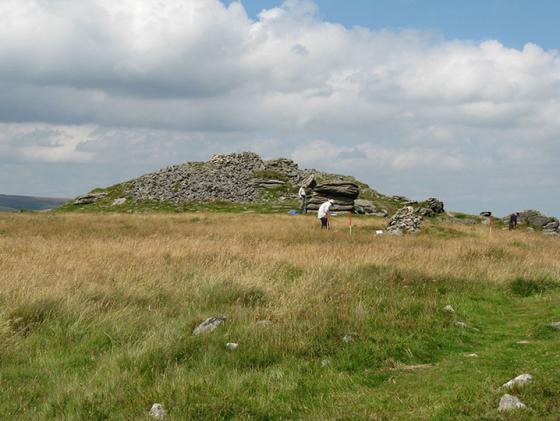A PREHISTORIC tomb discovered on North Dartmoor is slowly revealing its ancient secrets, as final analysis work on the artefacts found within nears completion. In August 2011, excavation work began on a cremation burial chamber discovered on Whitehorse Hill near Fernworthy Forest. Co-ordinated by Dartmoor National Park Authority with funding from English Heritage, the excavation has revealed an internationally important collection of early Bronze Age organic remains and artefacts. The find is now considered to be the most important assemblage of prehistoric grave goods ever recovered in South West England. The survival of organic remains is also seen to be of international importance. The assessment of the cremated human remains has revealed that these represent no more than one individual, with an age at death of about 15 to 25 years old. The gender is unknown. The overall impression is of a small, gracile person. A number of small textile fragments were recovered from the cremation, their charred state suggesting that the textile accompanied the body into the cremation, maybe worn as clothing, or added as a shroud or used to bind the body. Analysis of the skilfully-made textile and animal skin object found in the cist has revealed that this is a band of textile made from finely woven nettle fibre. Stitched to the outer edges of this were two rows of leather binding with a fringe of outward pointing leather triangles made from thin calf skin. This object seems to be unique in North Western Europe, its fine decorative work suggests it was an item to be worn, possibly as a sash or belt. An arm band was also found within the tomb, with domed rivets made of tin and fibres made from cow hair. The use of tin for decorative objects is exceptionally rare within prehistoric burial contexts in Britain and despite tin being a locally available resource on Dartmoor, this is the first time it has been found within a prehistoric archaeological context. Cow hair was also used to make a basket containing the majority of over 200 beads discovered, by far the largest number of beads found from a single Bronze Age discovery in South West England. Seven of those beads discovered are made of amber. Amber is an exotic resin from the Baltic, associated with supernatural powers and used as an amulet. The presence of these beads strongly suggests that this was a high status burial. There are also 92 individually perforated disc or sphere-shaped shale beads. The shale has been identified as coming from Kimmeridge in Dorset. Other discoveries within the cist include four wooden studs, probably used in ears or elsewhere on the body, or set into leather belts or clothing, two wooden stakes, some fragments of a copper alloy, and an animal pelt. The analysis work has been funded by English Heritage, the Dartmoor National Park Authority, Devon County Council and a number of other organisations and private individuals. It has been carried out by specialists from English Heritage, British and European Universities and the British Museum. The painstaking conservation work, which was undertaken by the Wilshire Conservation Service, Chippenham has also finished and the artefacts will soon be transferred to the Plymouth City Museum and Art Gallery, with a major exhibition ‘Whitehorse Hill: A Prehistoric Dartmoor Discovery’ planned at the museum from September 13 to December 13.
tavistock-today.co.uk/News.cfm?id=18562&headline=Ancient%20tomb%20gives%20up%20its%20secrets










































































































































































































